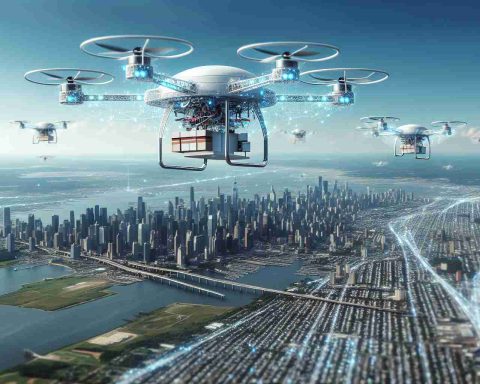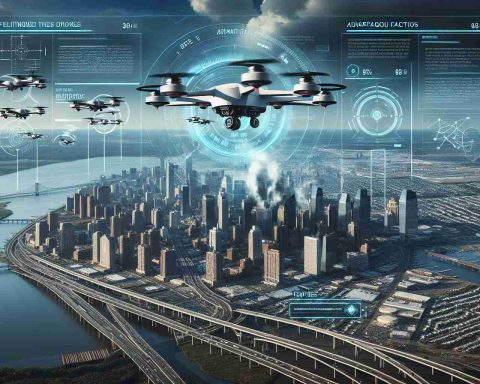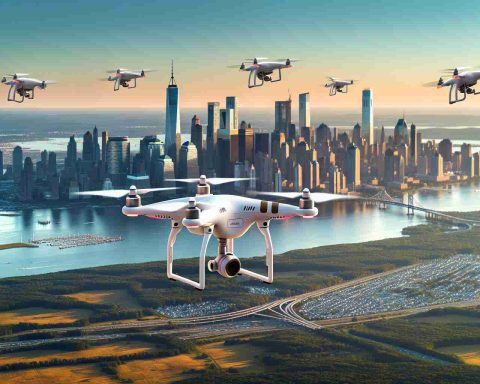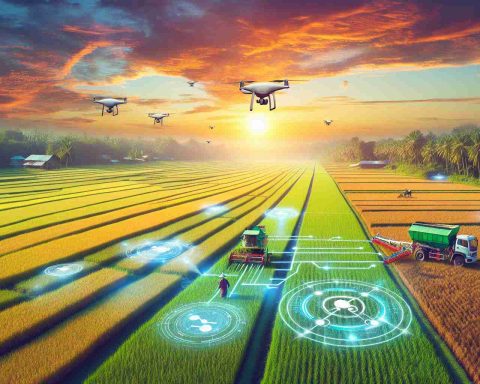Upcoming Satellite Technology May Change Mobile Communication Forever
In a groundbreaking development set to reshape mobile communication, standard phone calls may soon be transmitted via satellites within the next two years. Spearheaded by Elon Musk’s Starlink initiative, this advancement challenges the traditional telecom giants like Telstra and Optus, as consumers prepare for a new era of connectivity.
Back in November, U.S. regulators authorized the deployment of Starlink’s services which will allow users to send messages, make phone calls, and access the internet directly through their mobile devices, sidestepping the need for conventional cellular networks. This innovative shift is expected to disrupt the existing telecommunications landscape deeply, forcing long-established companies to rethink their strategies and technology.
As satellite connectivity evolves, consumers could experience enhanced coverage in remote areas that traditionally rely on poor service provided by existing networks. The implications for accessibility and communication are vast, providing new opportunities for everyone involved.
In a landscape filled with changes, telecom companies that depend solely on fixed lines and terrestrial wireless systems are in a race against time to adapt to this new technology. The imminent arrival of satellite-based mobile communication systems signals a major transformation in how we connect, potentially leading to a more connected world free from the limitations of conventional systems.
The Transformative Impact of Satellite Technology on Global Communication
The advent of satellite technology in mobile communication heralds profound implications for society and culture. As traditional telecom structures face disruption, the shift towards satellite connectivity may democratize access to communication. Underserved populations in remote areas will gain unprecedented access, fundamentally reshaping how information flows and enabling broader participation in the digital economy. This transformation could invigorate local economies, enhancing opportunities for entrepreneurship and innovation.
Moreover, the global economy stands to benefit significantly from this shift. As satellite networks become more accessible, businesses can operate in previously disconnected regions, expanding their markets and supply chains. Increased connectivity may also attract investment into infrastructure, creating jobs and stimulating growth in emerging markets.
However, one must consider the environmental implications of deploying thousands of satellites into orbit. The risk of space debris, coupled with the energy consumption required for satellite manufacturing and launches, poses a challenge for sustainability. Balancing technological progress with ecological responsibility becomes crucial.
As we look to the future, the evolution of communication technology suggests a trend toward greater integration and innovation. Satellite communication could pave the way for advancements in telehealth, education, and remote work, fostering a culture that embraces connectivity as a fundamental right. In this new era, the paradigm of communication will not only change but become an integral lifeline in a globally interconnected society.
The Future of Communication: How Satellite Technology is Set to Revolutionize Mobile Connectivity
Upcoming Satellite Technology May Change Mobile Communication Forever
The world of mobile communication is on the brink of a revolutionary transformation, driven by advancements in satellite technology. In the next two years, standard phone calls may be relayed through satellites, a significant leap spearheaded by initiatives such as SpaceX’s Starlink program. This innovation threatens to upend traditional telecommunications giants, as it opens a new frontier of connectivity.
Features of Satellite Communication
1. Direct Device Connectivity: The upcoming satellite services will enable users to send messages, make voice calls, and access the internet directly from their mobile devices without relying on conventional cellular networks.
2. Expanded Coverage: With satellite communication, users in remote and rural areas will enjoy improved service and coverage, addressing the issue of poor connectivity that has long plagued these regions.
3. Reduced Latency: Modern satellites are designed to minimize latency, ensuring that communication is fluid and natural, even for real-time applications like video calls and gaming.
Advantages of Satellite-Based Mobile Communication
– Accessibility: This technology can bridge the connectivity gap for individuals in underserved areas, providing them with better access to information and services.
– Disruption of Traditional Models: Existing telecom companies may be forced to innovate in response to the competition posed by satellite services, likely leading to improved options for consumers.
– Robust Disaster Response: Satellite communication can remain operational where traditional networks fail, helping during emergencies or natural disasters.
Limitations and Considerations
– Cost Implications: Initial deployment of satellite technology could lead to higher prices for consumers until systems are fully operational and competition stabilizes.
– Technical Challenges: Depending on satellite positioning and technology, there may be issues related to signal interference, especially in urban environments with tall buildings.
– Regulatory Hurdles: Governments and regulators will need to establish frameworks that govern the use of satellites for mobile communication, which could slow adoption.
Market Insights and Predictions
As we look ahead, the telecommunications market is poised for dynamic changes. Increased investment in satellite technology by companies like Starlink and other entrants will push traditional networks to evolve. By 2025, analysts predict that satellite services may capture a significant market share in the mobile communications sector, particularly in hard-to-reach areas.
Trends in Satellite Communications
– Integration with 5G: Future developments will likely see a synergy between satellite technology and existing 5G networks, creating a more comprehensive coverage experience.
– User-Centric Applications: There’s a rising trend for applications that take advantage of satellite communication, such as enhanced telemedicine services, remote education tools, and improved logistic operations for businesses.
Conclusion
The imminent deployment of satellite-based mobile communication systems marks the beginning of a new era in connectivity. As these systems take shape, consumers worldwide will enjoy unprecedented levels of access, especially in regions that have traditionally been overlooked. The transition to satellite technology not only promises improved connectivity but also a more interconnected world, one that is less dependent on terrestrial infrastructure.
For more insights into the evolving landscape of telecommunications, visit SpaceX.




















